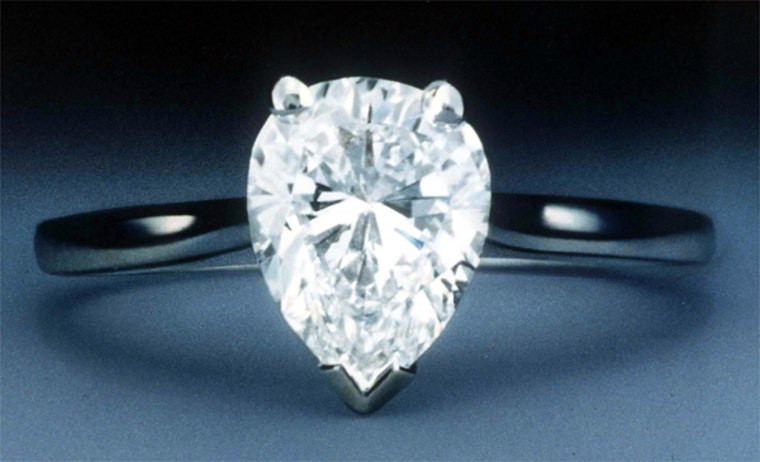Suddenly, a diamond means so much more when the ring is on the other hand.
Thanks to a national advertising campaign by the diamond producer DeBeers, jewelers are seeing greater interest in -- and purchase of -- what are known as "right-hand" diamond rings.
Right-hand rings themselves are no different than other diamond rings, except that they are worn on the right hand, while engagement rings are worn on the left.
What is different is DeBeers' campaign. Unlike other ad campaigns for diamonds, this one, launched in September, is aimed specifically at women, who are using their growing spending power and success to buy more expensive pieces of jewelry for themselves.
"We have sold nice substantial rings for the right hand all along, but I think they've become even more popular with the DeBeers advertising," said Scott Reising, of Scott Reising/Hyde Park Jewelers. "That segment is up considerably over last year."
Specifically, Reising said his right-hand ring sales climbed by 50 percent to 100 percent in the fourth quarter of 2003, over the same period in 2002. He said 50 percent of his customers are women, some of whom have spent as much as $50,000 in one visit.
The trend is an extension of a broader movement -- that of women buying themselves diamond earrings, tennis bracelets and other types of expensive jewelry. It is a movement that took shape over the past 10 years, local jewelers say, as women progressed professionally and financially.
According to the "Jewelry Report 2002," by the research and consulting firm Unity Marketing, women's self-purchasing of fine jewelry almost doubled from 1999 to 2001, the most recent information available, to 4.5 items from 2.7 items per year. Fine jewelry was a $53.2 billion industry in 2002.
"Of our top five customers, the top two or three are women," said Tim Dwight of Motch Jewelers in Covington, Ky. "We have a couple customers (who) buy $4,000 pieces regularly."
As for right-hand rings, Dwight has sold almost 15 since the DeBeers campaign launched, a 50 percent increase.
"If you spoke to most successful women and asked them what they would splurge on, I would think the majority of them would say jewelry," said Susanne Halmi, market vice president of Tiffany & Co. in downtown Cincinnati. "Going forward, that's really going to be the market to go after."
In the DeBeers campaign, the right-hand ring signifies independence and power. Aptly, the promotion is called "Women of the World, Raise Your Right Hand."
One of the ads, which ran in major magazines including Vanity Fair and Food & Wine, read "Your left hand says 'We.' Your right hand says 'Me.'" Another declares: "Your left hand is a symbol of loyalty. Your right hand is a symbol of freedom."
"I sold several during Christmas, actually," said B.J. Foreman, president of Boris Litwin Jewelers in Hyde Park. It is not uncommon, she said, for women to ask to see $1,000 pieces of jewelry.
"Sometimes women walk in as if they are starving," she said. "With their eyes, they devour what's there. They go up and down the cases like they're going to eat it."
Experts say that women are buying themselves more gold, rubies and diamonds for some of the same reasons that men buy sports cars. Jewelry can represent status, a sign that a woman has arrived professionally and financially. Jewelry can be a way to reward oneself for a promotion, or given to oneself as a birthday gift.
But unlike pearl earrings or an emerald brooch, right-hand rings speak to independence, as well as success, thanks to the images created by DeBeers. Some women don't care to wait for a man to buy them a diamond, experts say. But married women, too, are buying expensive jewelry, often with their own money.
"I think the concept of trying to appeal to women to buy a luxury jewelry product is certainly right on target with where women are today," said Britt Beemer, founder of America's Research Group, a Charleston, N.C., agency that tracks consumer behavior. "The days of getting permission are really over, and that's what's really expanded the buying power of women over the last 10 years."
But while right-hand rings are gaining interest, some local Cincinnati jewelers think purchases in the Queen City lag those on the coasts, meaning sales can grow further.
"Cincinnati is still very conservative, and a lot of things are slow to change," said Dodd Jewelers owner Michael Gilbert, who said 50 percent of his customers are women. "These right-hand rings might come in very strong in a year or two."
